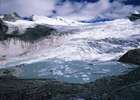The study shows an association of death rates of the bees with an insect virtus and a fungus.
The Center for Progressive Reform's new study recommends regulators apply the "precautionary principle" to assess risks and needed safeguards.
People could record ecological impacts of environmental or natural disasters using smart phones and other devices that would automatically disseminate the information to a single point.
The report from U.S. Navy Secretary Ray Mabus says the money will be used for recovery through a coordinated federal, state and local, long-term strategy
Researchers in EPA's National Risk Management Research Laboratory in Ohio tested the ability of oil to biodegrade after 20 years and discovered that oxygen was the limiting factor.
ExxonMobil will provide underwater equipment to the Marine Well Containment Company for use by BP in the Gulf of Mexico.
University of Michigan-led researchers will examine current climate, land use, precipitation and water governance patterns and then combine the data with climate change models to forecast possible effects.

Researchers are demonstrating that plants from Earth could be grown without soil on the moon or Mars or even urban centers.
The team will establish a Website for watershed managers and planners to analyze river basins, and make more informed decisions.
EPA is reissuing permits for significant wastewater facilities to protect the Potomac River and Chesapeake Bay.

U.S. Geological Survey and Michigan State University study applies NOAA models to determine the pathways of contaminants and indicator bacteria.
EPA and other panelists will discuss technical tools and support to local watershed groups.
University of California Davis scientists said that most of the antibiotics used to treat dairy cows generally degrade in the top 12 inches of soil.
Long-standing pesticide faces government review, an activist campaign, and two lawsuits.
The city will implement a comprehensive, system-wide plan to ensure that all sanitary sewer overflows associated with insufficient capacity of its separate wastewater collection system are prevented within 12 years.
By 2016, the state will require refiners to produce oil with a maximum sulfur content standard of 15 parts per million; the current standard is 2,000 to 3,000 parts per million.
The agency says the company is exceeding its permitted industrial wastewater discharge, which is piped to Tonawanda's sanitary sewer system.
The landowner and the company he hired to perform excavation to create an earthen dam will pay a $30,000 civil penalty.
Federal and Tennessee agencies have determined that any coal ash remaining in the river presents minimal health risks to recreational users.

According to the U.S. Geological Survey, glaciers in the Himalaya are a major source of fresh water and supply meltwater to all of the rivers in northern India.